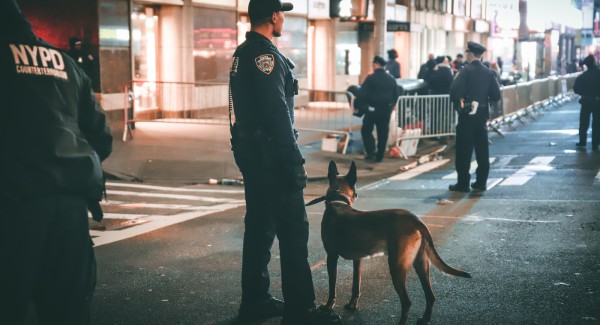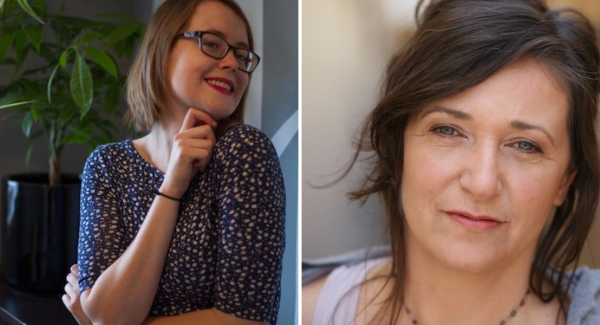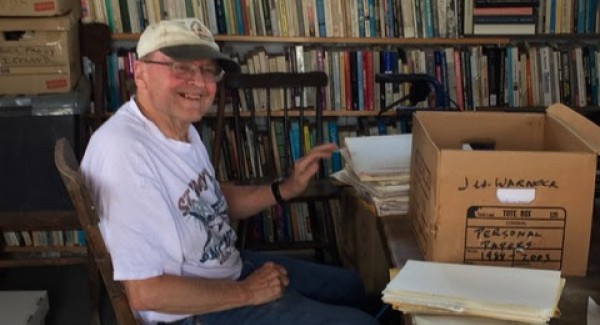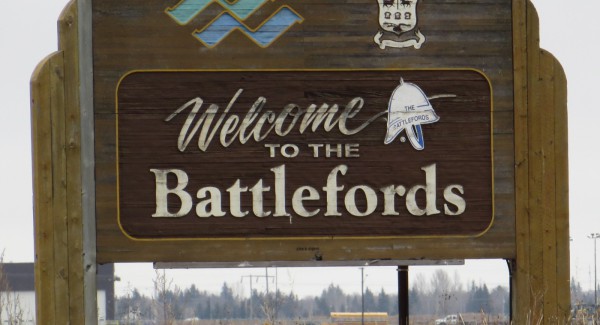“We have buried too many”: A Q&A with Tristen Durocher
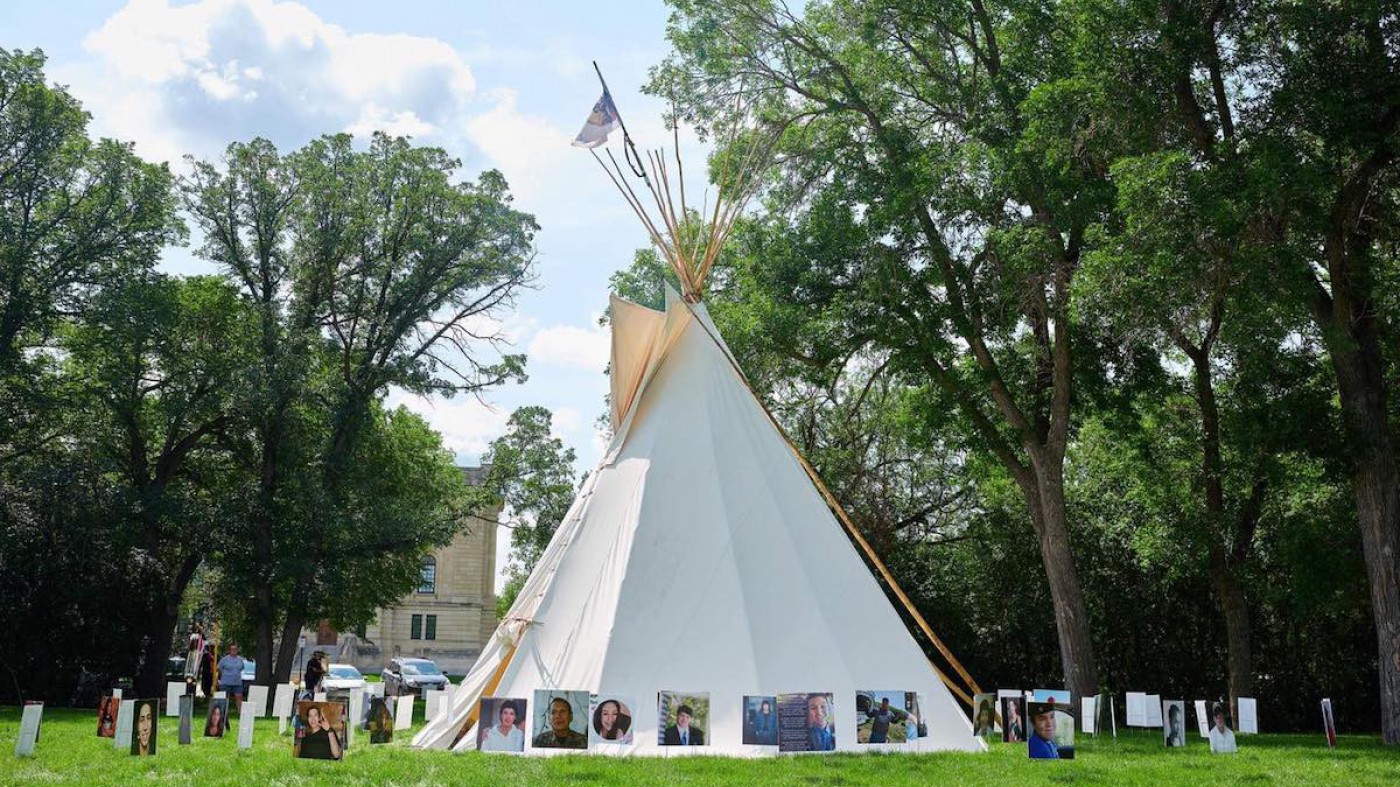
Upon arriving in Regina, Durocher set up a tipi and began a hunger strike on the lawn of the Saskatchewan Legislature. Walking With Our Angels/Facebook.
In May the Saskatchewan government released the Pillars for Life suicide prevention plan, a five-point plan to reduce suicide in the province, where roughly 144 people take their own lives every year – the highest rate of any province in Canada, according to the Centre for Suicide Prevention. The rate is especially high among Indigenous people and in the North, where 24-year-old Métis fiddle player Tristen Durocher was born and raised. University of Saskatchewan college of medicine adjunct professor Jack Hicks called the plan “a travesty” and “the weakest [he’d] ever seen.” The next month, a bill put forward by a Sask. NDP MLA that would establish a provincial strategy to address suicide as a public health issue was voted down.
Durocher decided to do something about it, setting out on a 635 kilometre walk from the northern community of Air Ronge on July 2 and arriving in Regina on July 31, where he began a 44-day hunger strike. Durocher has set up a teepee on the lawn across from the legislature, where Justice for Our Stolen Children had a camp two years ago. The Sask Dispatch spoke to Durocher about the suicide prevention plan, the struggles – and resiliency – of northern communities, and what he hopes will come out of his protest.
Tristen Durocher. Walking With Our Angels/Facebook.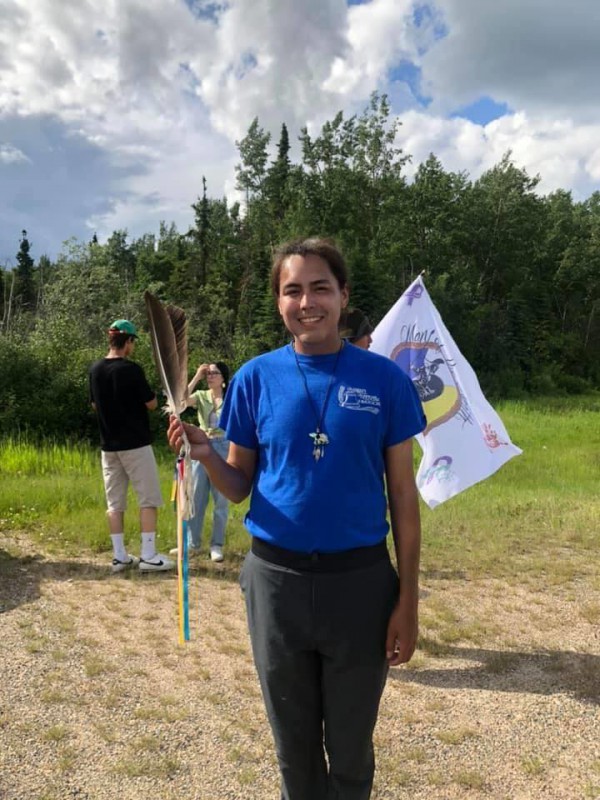
You’ve had a 635-kilometre walk and now you’re fasting. How are you feeling?
I’m on day six of living on tea and hope and prayer. And I’m feeling good, my mind is clear. My energy levels have not fluctuated. I still wake up early in the morning. I’m still optimistic. And I still have not lost sight of why we are here and what we are hoping to accomplish.
What are you hoping to accomplish during this time?
Well I’d like the public to really question the members that they vote into the halls of power to claim our majority in this province, because for too long those members have ignored this issue of suicide and have done nothing about it.
[The provincial suicide plan] Pillars for Life is a vague and meaningless document. Unlegislated, there is no accountability with any follow-through and it’s simply not good enough. And that’s all they’re willing to give us: plans that don’t even really need to be enacted, that are just suggestions and that are simply not good enough.
And so that is why I’m here. Because suicide is the leading cause of death in the North for ages 10 to 46. Moreover, Saskatchewan has the highest suicide rates in Canada. And on top of that, for every 30 girls that take their lives in this province only one of them is not Indigenous, and yet you have the rural and remote health minister, Warren Kaeding, saying on the floor of the legislative assembly, “Mr. Speaker, suicide knows no territorial or geographical boundaries. Mr. Speaker, suicide is not an issue of race.” Well the statistics say otherwise. It paints a very clear picture of the reality. And here is our authority for public health, denying that reality outright on the floor. While recorded. And so he, to me, is simply not good enough.
If this young boy in Regina cannot get mental health services help in the capital of our province, what hope is there for the children across northern Saskatchewan in communities where their mothers need to drive six hours just to have a baby? Less than none.
And I’m here because I want to pressure our public. We have an upcoming election in November, and I want them to really consider who they vote for, because they continue to vote in a lethal indifference. It’s not only ignorant and disregarding of many lives in this province, but it’s actually criminally negligent because their indifference, their lack of action despite their capacity to do something about these issues, is in and of itself criminal negligence. The sitting government has a fiduciary, legally binding responsibility to provide mental health services to the residents of Saskatchewan.
That boy [Samwel Uko] who drowned in Wascana, who was forcibly turned away by security, was failed by them. And he is one of many in this province who are failed by them. I want to bring a question to the public’s awareness. If this young boy in Regina cannot get mental health services help in the capital of our province, what hope is there for the children across northern Saskatchewan in communities where their mothers need to drive six hours just to have a baby? Less than none. It is time that stops. We have buried too many. And we continue to bury too many. And despite the fact that several reserves across northern Saskatchewan have declared states of emergency because of the suicide epidemic, still nothing has been done. All we received is a weekend token consultation with Premier Brad Wall, a few photo ops followed by more inaction. And again, that is simply not good enough
What does an effective suicide prevention strategy look like?
It is not an umbrella solution. Each community has different problems. In some there are gangs and gang violence. For some there is heavy drug use at epidemic levels, where curtains sparkle because of meth smoke in the air in the living room. And for some, there are horrific cycles of sexual abuse and trauma perpetuated by the residential school system that set in motion wheels of intergenerational trauma. So the solution needs to be community-based, and the solutions cannot be brought by way of community saviours. What the people in the communities need is the help they’re asking for.
Warren Kaeding should be meeting with them. He should be speaking to them. He should be going to the north and asking, “What do you need?”
I know communities that wanted to start their own dialysis centres and the government told them they can’t, and they said “We’re not asking for permission” and they did it. I know communities that had a ballpark $700,000 at their disposal [and] started a crystal meth detox facility, because meth was so rampant on their reserves that it was pretty much on every street, and the waiting lists [for treatment] were months long, and the treatment centres were hours away. And these people simply could not travel, given the state of their poverty and the state of their community. So they decided to start their own. They converted an old building into a crystal meth detox facility – this is in Montreal Lake by the way – and they have a 53 per cent recovery rate. Contrast that to the southern treatment centres whose recovery rate is 5 per cent. That’s a community-based solution to a problem they have.
Our leaders – I don’t mean our elected leaders, I mean our true leaders, who are working every day for our youth, for our women, for our communities, the ones that work on the front-line demographic, with the people we are trying to save, with the suicide prone, with the hurting, with the destitute – they know what they need. Warren Kaeding should be meeting with them. He should be speaking to them. He should be going to the North and asking, “What do you need?”
The solutions need to be formulated by the communities who are their own cultures, their own people. And they know what their youth lack. They know what their youth are hungry for.
Instead, he wants to set up a meeting with me over the phone. After I walked 635 kilometres and began a hunger strike and [am] literally on their front lawn. I don’t think he should be talking to a 24-year-old fiddle player who is simply just sick of playing his music for grieving mothers and grieving families. He should be meeting with the people who are working on the ground. But I will grant him a meeting, so that I can say this to his face.
And you ask what it would look like. I’m not going to speak on behalf of all of the North because every community knows it’ll be a different solution. But what I do know beyond a shadow of a doubt, is that every community should have a centre to deal with sexual trauma, because that is an epidemic in and of itself that’s the skeleton in the closet of our communities and that’s the skeleton the old priests and nuns from the residential schools put into our homes. And we don’t talk about it, but it’s there. The symptoms are there, the visible behaviours of people dealing with sexual abuse and sexual trauma, are there. And so that needs to be part of that solution, but moreover, the solutions need to be formulated by the communities who are their own cultures, their own people. And they know what their youth lack. They know what their youth are hungry for.
What do you want Indigenous youth – those who may have considered suicide, and those who have been affected by it – what do you want them to know?
I want them to know that they are not broken because they feel a lot of pain. Our people are in a lot of pain, and for 150 years we’ve been in a lot of pain. And so they’re sensitized, they are empathetic, and their hearts are open, and they feel the profound depth of our grief. And that doesn’t mean they’re broken. It means they’re here for a purpose and that purpose is to help us rid ourselves of some of that pain; they are the healers we need. They are the prayers our grandmothers dreamed of, and they are the hope that will carry us forward, beyond days when children need to spend their entire adult lives trying to recover from the traumas of their past.

